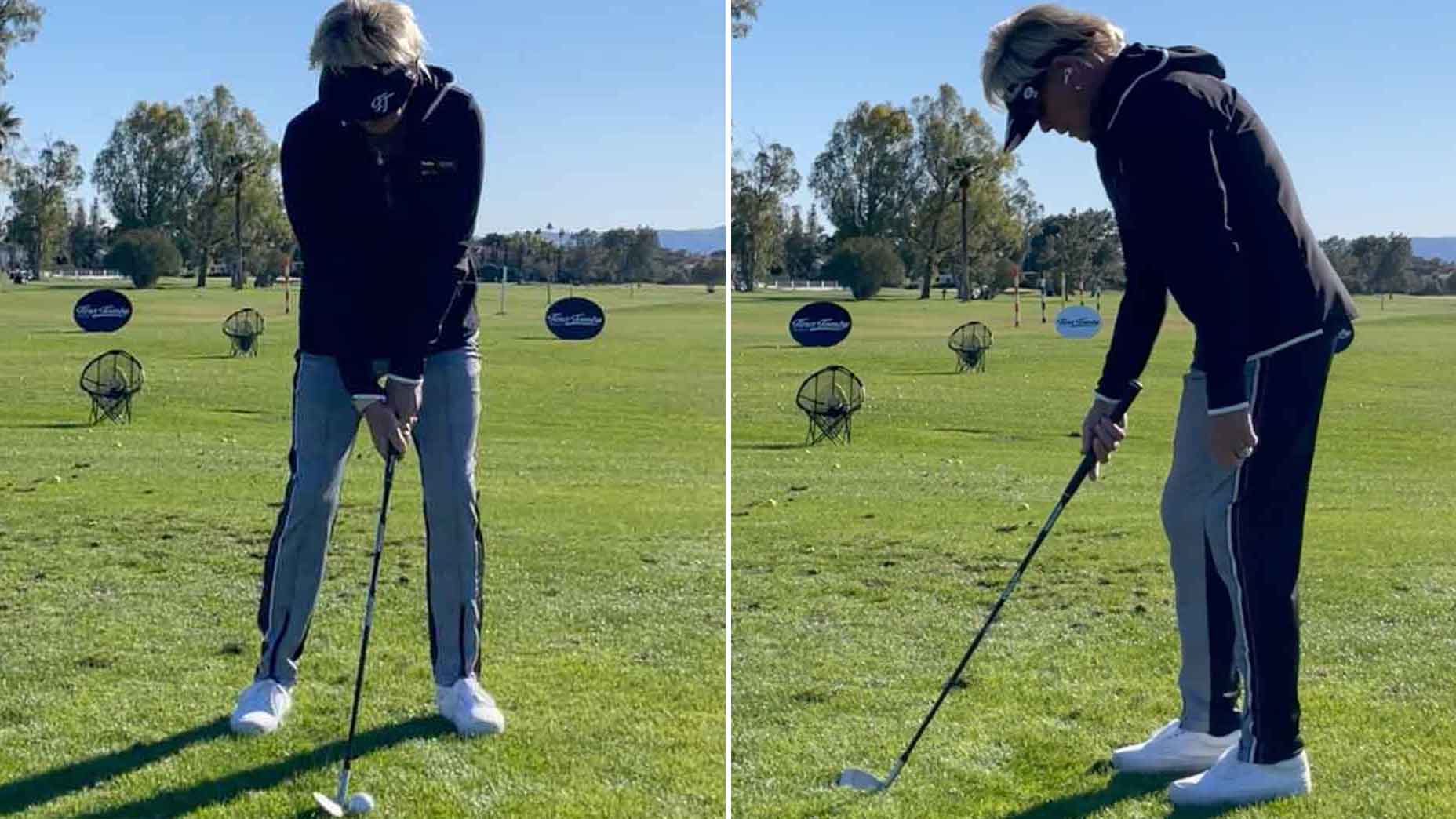
One swing, five distances? Tina Tombs shows you how.
Tina Tombs
One skill that many better players have is the ability to hit one club several different distances when needed.
For higher handicappers, this can seem like a daunting task, but teaching yourself to do it is easier than you think.
The first step is getting an accurate gauge on your full-swing sand wedge. Use a distance measuring device to get the best number possible. For me, a full, well-struck sand wedge (58-degrees) goes 75 yards.
But what if I’m faced with a shot that’s slightly shorter than that?
To take distance off, the first thing to do is grip down on the club (sometimes referred to as choking down). Going down about halfway will result in about four yards less difference, while going down all the way to the bottom of the grip will result in an additional four yards off, for a total of eight yards less. So there’s two new yardages right there!
Let’s say you’re faced with an even shorter shot: 60 yards. What then? In addition to taking eight yards off by gripping down to the bottom, you can also narrow your stance by one half-step on each foot to result in another four yards off. That gives you a total of 12 yards less than your typical full swing.
Now, how about going even shorter?
To take even more yardage off, keep your narrow stance, but open it up a bit. This will also encourage proper weight distribution throughout your swing. Swinging from this position will give you about half the distance of your normal full shot. The more you narrow and open your stance, the more it will lessen your distance.
As a general rule, each third of a foot-length that you move back with your lead foot will result in about four yards less distance.
As with everything in golf, the key to mastering short shots from these yardages is practice. Take some time on the range to work on these techniques, and you’ll be sure to notice a difference in your score.











